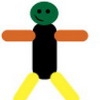DirectX 9 switching window state
If I may add my 2 pennies worth of limited knowledge on this -
When you change from full to windowed or visa versa, you need to release any resources that you created with the *POOL_DEFAULT parameter. If I've read the docs correctly, the ones created with MANAGED will live through the change without problems - I'm open to be corrected on this.
I hope this helps some. And yes, I do believe you load everything back in.
When you change from full to windowed or visa versa, you need to release any resources that you created with the *POOL_DEFAULT parameter. If I've read the docs correctly, the ones created with MANAGED will live through the change without problems - I'm open to be corrected on this.
I hope this helps some. And yes, I do believe you load everything back in.
If I may add my 2 pennies worth of limited knowledge on this -
When you change from full to windowed or visa versa, you need to release any resources that you created with the *POOL_DEFAULT parameter. If I've read the docs correctly, the ones created with MANAGED will live through the change without problems - I'm open to be corrected on this.
I hope this helps some. And yes, I do believe you load everything back in.
yip, i think that is about right too
Ughhhhh that sounds so annoying x)
All the images I load are using POOL_DEFAULT which means I'm going to have to add something that keeps track of all images that are loaded and then some way of reloading all images and recreating all the sprites D:
I've been trying the workaround ryan suggested with making it look full screen by changing the screen resolution but can't figure out how to do that in C++
I tried changing my method to do this:
But that doesn't seem to do anything at all, the window moves like I tell it to (0,0 for full screen and back to the middle for windowed) and the border disappears and comes back when windowed like it should but the screen resolution itself doesn't change. Any ideas how to do this? it'll save having to do all the reloading of textures etc.
All the images I load are using POOL_DEFAULT which means I'm going to have to add something that keeps track of all images that are loaded and then some way of reloading all images and recreating all the sprites D:
I've been trying the workaround ryan suggested with making it look full screen by changing the screen resolution but can't figure out how to do that in C++
I tried changing my method to do this:
if (!windowed)
{
//setup the device mode
DEVMODE devmode;
devmode.dmSize = sizeof(DEVMODE);
devmode.dmPelsWidth = mGameWindow.GetWidth();
devmode.dmFields |= DM_PELSWIDTH;
devmode.dmPelsHeight = mGameWindow.GetHeight();
devmode.dmFields |= DM_PELSHEIGHT;
devmode.dmBitsPerPel = 32;
devmode.dmFields |= DM_BITSPERPEL;
//position the window to 0, 0
mGameWindow.SetPosition(0, 0);
//change screen resolution
ChangeDisplaySettings(&devmode, 0);
} else {
//set screen resolution to initial settings
ChangeDisplaySettings(&initDev, 0);
//position window in middle of the screen
mGameWindow.CenterScreen();
}
But that doesn't seem to do anything at all, the window moves like I tell it to (0,0 for full screen and back to the middle for windowed) and the border disappears and comes back when windowed like it should but the screen resolution itself doesn't change. Any ideas how to do this? it'll save having to do all the reloading of textures etc.
the DirectX device could be lost, i hade that when i was experimenting with Fullscreen and then minimizeing it.
you need to resoet the device and reload your assets (refer to the DirectX documentation on what needs to be reloaded, but as far as i know you have to reser and reload everything but shaders)
Your probably right, the device gets lost on an alt + TAB, and what ive seen in Luna code, you change the back buffer dimensions etc, and then you have to reset the change to enable full screen
Ughhhhh that sounds so annoying x)
All the images I load are using POOL_DEFAULT which means I'm going to have to add something that keeps track of all images that are loaded and then some way of reloading all images and recreating all the sprites D:
I've been trying the workaround ryan suggested with making it look full screen by changing the screen resolution but can't figure out how to do that in C++
I tried changing my method to do this:
if (!windowed)
{
//setup the device mode
DEVMODE devmode;
devmode.dmSize = sizeof(DEVMODE);
devmode.dmPelsWidth = mGameWindow.GetWidth();
devmode.dmFields |= DM_PELSWIDTH;
devmode.dmPelsHeight = mGameWindow.GetHeight();
devmode.dmFields |= DM_PELSHEIGHT;
devmode.dmBitsPerPel = 32;
devmode.dmFields |= DM_BITSPERPEL;
//position the window to 0, 0
mGameWindow.SetPosition(0, 0);
//change screen resolution
ChangeDisplaySettings(&devmode, 0);
} else {
//set screen resolution to initial settings
ChangeDisplaySettings(&initDev, 0);
//position window in middle of the screen
mGameWindow.CenterScreen();
}
But that doesn't seem to do anything at all, the window moves like I tell it to (0,0 for full screen and back to the middle for windowed) and the border disappears and comes back when windowed like it should but the screen resolution itself doesn't change. Any ideas how to do this? it'll save having to do all the reloading of textures etc.
so, that code imatates fullscreen ?
can you post the code that creates the window ?
what i would do is this (i have my screen set to 1024x768)
set window position to 0,0
and screen width and height to 1024,768
and make it a borderless window (i hade the code to do this but i dont think i have it anymore, but you should only need to set the borderstyle to none)
Excellent, I changed the size of the window instead of having to change the actual screen resolution and it worked perfectly.
The only problem is that if the window is an odd shape the images and sprites get stretched (mine is 800x600 so it was fine scaling wise)
That's why I'd rather actually change the screen resolution if it's possible, but thank's for the help, that will do for now until I can find a better way or can be bothered to actually use the reset device method
Thanks, Mal
The only problem is that if the window is an odd shape the images and sprites get stretched (mine is 800x600 so it was fine scaling wise)
That's why I'd rather actually change the screen resolution if it's possible, but thank's for the help, that will do for now until I can find a better way or can be bothered to actually use the reset device method
Thanks, Mal
Excellent, I changed the size of the window instead of having to change the actual screen resolution and it worked perfectly.
The only problem is that if the window is an odd shape the images and sprites get stretched (mine is 800x600 so it was fine scaling wise)
That's why I'd rather actually change the screen resolution if it's possible, but thank's for the help, that will do for now until I can find a better way or can be bothered to actually use the reset device method
Thanks, Mal
when you figure that out, can you PM me or post it here ?
I found a way of changing the screen resolution, I wasn't far off already:
But it would seem that it causes the device to be lost because the contents of the window go white again
I suppose the only way of doing it is to reset everything which is just so annoying D: I'll work on it tomorrow maybe.
Thanks for all the help
DEVMODE dm;
dm.dmSize = sizeof(DEVMODE);
if(windowed)
{
dm.dmPelsWidth = initDev.dmPelsWidth;
dm.dmPelsHeight = initDev.dmPelsHeight;
dm.dmFields = (DM_PELSWIDTH | DM_PELSHEIGHT);
} else {
dm.dmPelsWidth = mGameWindow.GetWidth();
dm.dmPelsHeight = mGameWindow.GetHeight();
dm.dmFields = (DM_PELSWIDTH | DM_PELSHEIGHT);
}
ChangeDisplaySettings(&dm, 0);
But it would seem that it causes the device to be lost because the contents of the window go white again
I suppose the only way of doing it is to reset everything which is just so annoying D: I'll work on it tomorrow maybe.
Thanks for all the help
Device can even lost from a popup window that rapes your frame buffer. You can not avoid coding this if you creates a directx based application.
This topic is closed to new replies.
Advertisement
Popular Topics
Advertisement








